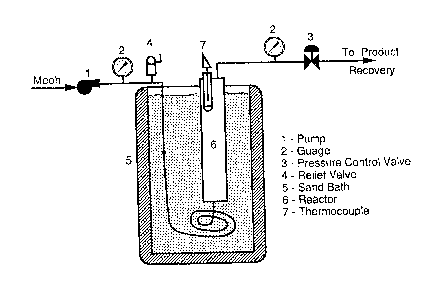Some of the information on this Web page has been provided by external sources. The Government of Canada is not responsible for the accuracy, reliability or currency of the information supplied by external sources. Users wishing to rely upon this information should consult directly with the source of the information. Content provided by external sources is not subject to official languages, privacy and accessibility requirements.
Any discrepancies in the text and image of the Claims and Abstract are due to differing posting times. Text of the Claims and Abstract are posted:
| (12) Patent Application: | (11) CA 2055066 |
|---|---|
| (54) English Title: | RECOVERY OF METHYL ESTERS OF AROMATIC ACIDS AND GLYCOLS FROM THERMOPLASTIC POLYESTER SCRAP |
| (54) French Title: | RECUPERATION DE METHYLESTERS D'ACIDES AROMATIQUES ET DE GLYCOLS A PARTIR DE DECHETS DE POLYESTERS THERMOPLASTIQUES |
| Status: | Deemed Abandoned and Beyond the Period of Reinstatement - Pending Response to Notice of Disregarded Communication |
| (51) International Patent Classification (IPC): |
|
|---|---|
| (72) Inventors : |
|
| (73) Owners : |
|
| (71) Applicants : |
|
| (74) Agent: | MARKS & CLERK |
| (74) Associate agent: | |
| (45) Issued: | |
| (22) Filed Date: | 1991-11-06 |
| (41) Open to Public Inspection: | 1992-05-10 |
| Availability of licence: | N/A |
| Dedicated to the Public: | N/A |
| (25) Language of filing: | English |
| Patent Cooperation Treaty (PCT): | No |
|---|
| (30) Application Priority Data: | ||||||
|---|---|---|---|---|---|---|
|
. TITLE
Recovery of Methyl Esters of Aromatic Acids and
Glycols from Thermoplastic Polyester Scrap
ABSTRACT
Dimethyl terephthalate vapor and glycol vapor
are prepared by treating polyester polymer wikh excess
methanol vapors at a temperature above 230°C. The
excess methanol acts as a carrier gas for the dimethyl
terephthalate and the glycol.
PI-0500
Note: Claims are shown in the official language in which they were submitted.
Note: Descriptions are shown in the official language in which they were submitted.

2024-08-01:As part of the Next Generation Patents (NGP) transition, the Canadian Patents Database (CPD) now contains a more detailed Event History, which replicates the Event Log of our new back-office solution.
Please note that "Inactive:" events refers to events no longer in use in our new back-office solution.
For a clearer understanding of the status of the application/patent presented on this page, the site Disclaimer , as well as the definitions for Patent , Event History , Maintenance Fee and Payment History should be consulted.
| Description | Date |
|---|---|
| Inactive: IPC from MCD | 2006-03-11 |
| Inactive: IPC from MCD | 2006-03-11 |
| Time Limit for Reversal Expired | 1998-11-06 |
| Application Not Reinstated by Deadline | 1998-11-06 |
| Deemed Abandoned - Failure to Respond to Maintenance Fee Notice | 1997-11-06 |
| Application Published (Open to Public Inspection) | 1992-05-10 |
| Abandonment Date | Reason | Reinstatement Date |
|---|---|---|
| 1997-11-06 |
Note: Records showing the ownership history in alphabetical order.
| Current Owners on Record |
|---|
| E.I. DU PONT DE NEMOURS AND COMPANY |
| Past Owners on Record |
|---|
| ROBERT E. MICHEL |